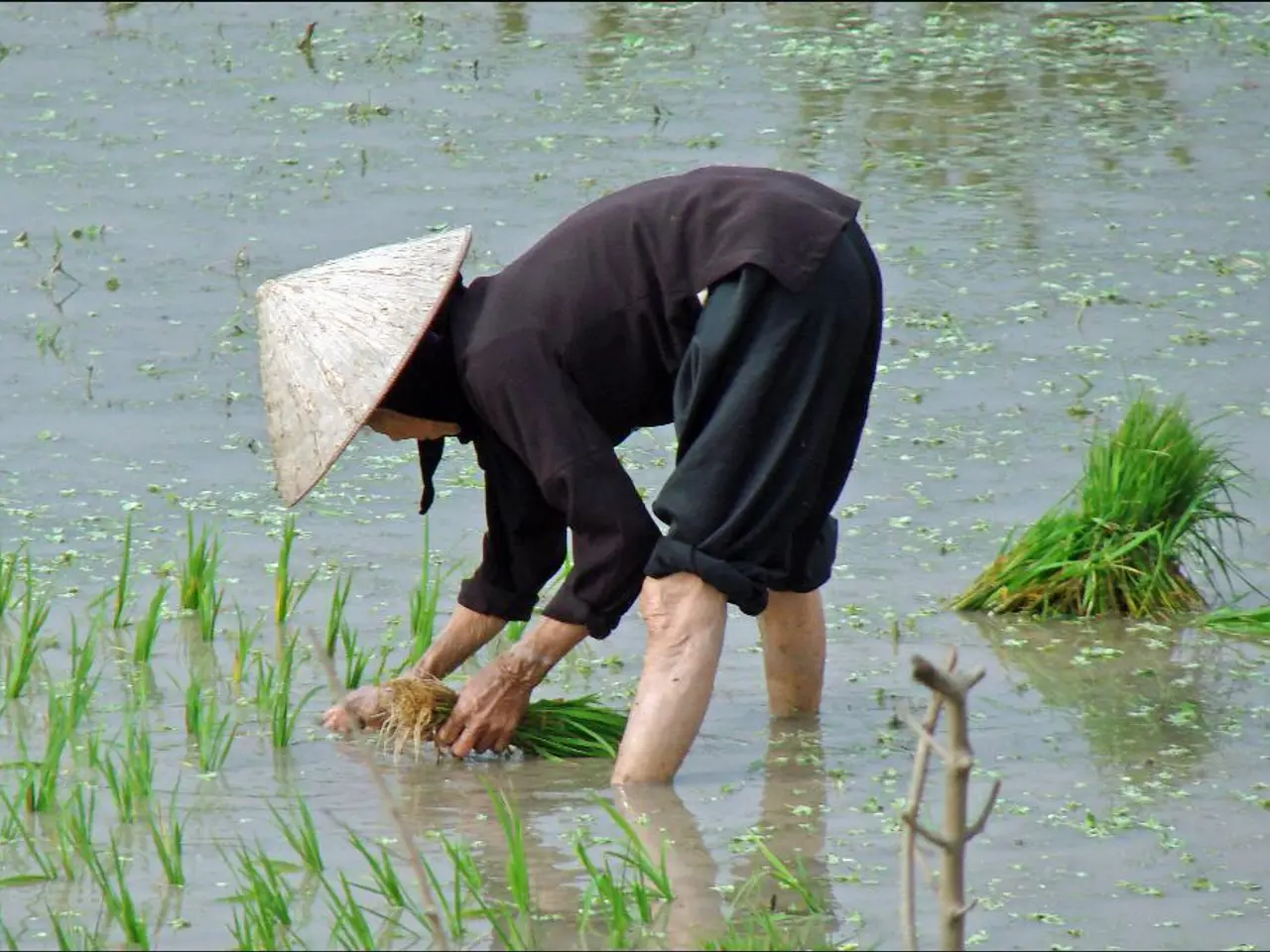Planting Peas in Pennsylvania: Optimal Time Frames and Strategies for a Thriving Crop
Planting and Caring for Peas in Pennsylvania
Preparing the Soil
When preparing the soil for planting peas in Pennsylvania, it's important to use fertile, well-drained soil with good moisture retention, but avoid heavy clay soils. Enrich the soil by working in some compost or organic matter to improve its texture. Maintain the soil pH around 5.8 to 7.0, which is ideal for peas. Avoid adding high-nitrogen fertilizer, as peas, as legumes, fix nitrogen from the air and generally don't require extra nitrogen fertilizer. Ensure the soil is moist but not saturated, as peas dislike overly wet conditions. For an extra boost, consider inoculating pea seeds with beneficial bacteria at planting to boost nitrogen fixation.
Planting Peas
The best time to plant peas in Pennsylvania is early spring, about 4 to 6 weeks before the last expected frost date, when the soil is workable, and also possibly in late summer for a fall crop. To sow peas, dig a trench about 1 to 2 inches deep, place seeds 11⁄2 to 3 inches apart in the row, and space rows between 18 to 30 inches apart.
Caring for Peas
Peas thrive in well-drained soil and plenty of sunlight. Water peas consistently until seeds germinate, typically within 7-14 days. Peas need regular water but avoid waterlogging. Peas germinate best in cooler conditions, around 40°F to 75°F. Peas are hardy and can withstand some chilly nights.
Identifying and Treating Pest Infestations
Aphids can cause yellow leaves, while slugs and snails munch on seedlings, leaving holes. Flea beetles create tiny round holes in leaves. To combat these pests, consider using insecticidal soap, neem oil, beer traps, copper tape, and floating row covers. For powdery mildew prevention, use disease-resistant pea varieties, regularly clean garden tools, remove infected plants, and use organic fungicide. Powdery mildew appears as a white powder on leaves, while root rot usually results from overwatering and poor drainage, leading to yellow and wilting plants.
Harvesting and Preservation
Harvesting peas at the right moment is crucial for peak flavor. Garden peas should be plump but not overly swollen, snow peas should be flat and not filled out, and sugar snap peas should have full pods but peas inside not hardened. Freezing, drying, and refrigerating peas are methods for preservation and storage to prolong their usability. It's crucial to avoid moisture buildup when storing peas in the refrigerator.
Companion Planting
Companion planting can be beneficial for peas. Consider planting peas with lettuce and spinach to help manage pea plant growth by utilizing mutually beneficial plants.
Recommended Pea Varieties
Shelling peas like Green Arrow and Lincoln are sweet and tender, perfect for fresh salads or lightly steamed as a side dish. Snowbird snow peas are a staple in stir-fries, offering a crisp texture. Sugar snap peas and Early Snap varieties are wonderfully crunchy and sweet, making them ideal for raw snacking or quick sautéing.
Sources
- PennState Extension
- Cornell University Cooperative Extension
- University of Maine Cooperative Extension
- Missouri Botanical Garden
- University of Vermont Extension
Read also:
- Hidden beneath the appealing aesthetic of Consume Me's artwork lies a more ominous nature
- Perfect Treat for Soothing and Relaxing Muscles: Magnesium-Infused Body Butter
- First glance at Arthur Pequegnat's Canuck gingerbread clock model
- Thirty-three Useful and Random Items Worth Investing in for the Current Year





